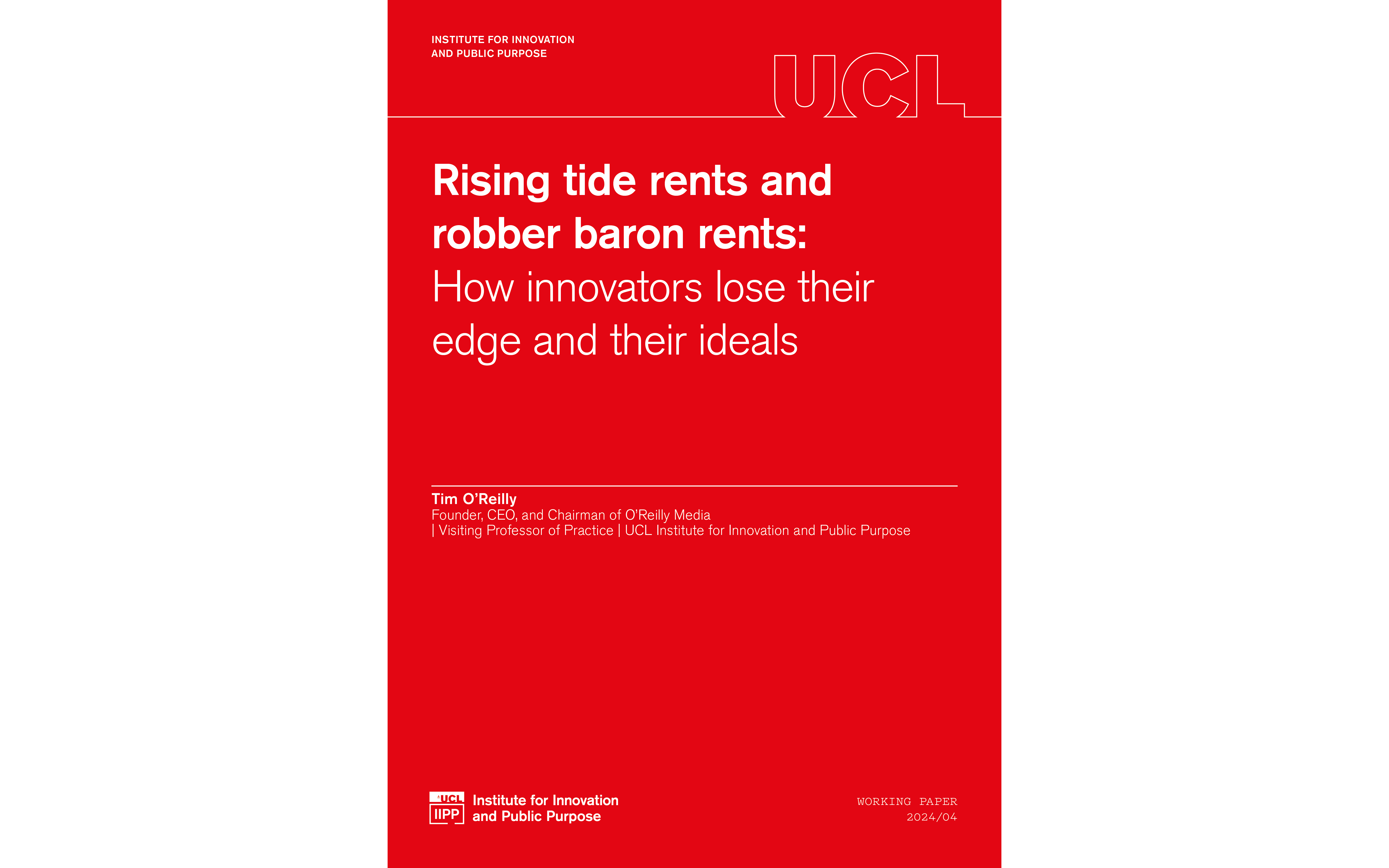Rising tide rents and robber baron rents: How innovators lose their edge and their ideals
Authored by Tim O'Reilly

14 March 2024
UCL Institute for Innovation and Public Purpose (IIPP) Working Paper Series: IIPP WP 2024-04
Author:
- Tim O’Reilly | Founder, CEO, and Chairman of O’Reilly Media | Visiting Professor of Practice at UCL Institute for Innovation and Public Purpose (IIPP)
Reference:
O’Reilly, T. (2024). Rising tide rents and robber baron rents: How innovators lose their edge and their ideals. UCL Institute for Innovation and Public Purpose, Working Paper Series (IIPP WP 2024-04). Available at: https://www.ucl.ac.uk/bartlett/public-purpose/wp2024-04
Abstract:
During a new technology cycle, market leaders emerge, because they solve new problems and create new value, not only for consumers but also for a rich ecosystem of suppliers, intermediaries and even competitors. Even though these market leaders receive a disproportionate share of the profits, earning so-called ‘Schumpeterian rents’ as they dominate the emerging market, value creation is a rising tide that lifts all boats. However, this kind of virtuous rising tide rent, which benefits everyone, doesn’t last. Once the growth of the new market slows, the now-powerful innovators can no longer rely on new user adoption and collective innovation from a vibrant ecosystem to maintain their extraordinary level of profit. They often turn to extractive techniques, using their market power to try to maintain their now-customary profits in the face of macroeconomic factors and competition that ought to be eating them away. They start to collect robber baron rents. This pattern has played out throughout the history of the computer and software industry. As the industry begins a new cycle fuelled by generative AI, what can we learn from this history that might guide entrepreneurs, regulators and policymakers?
 Close
Close

